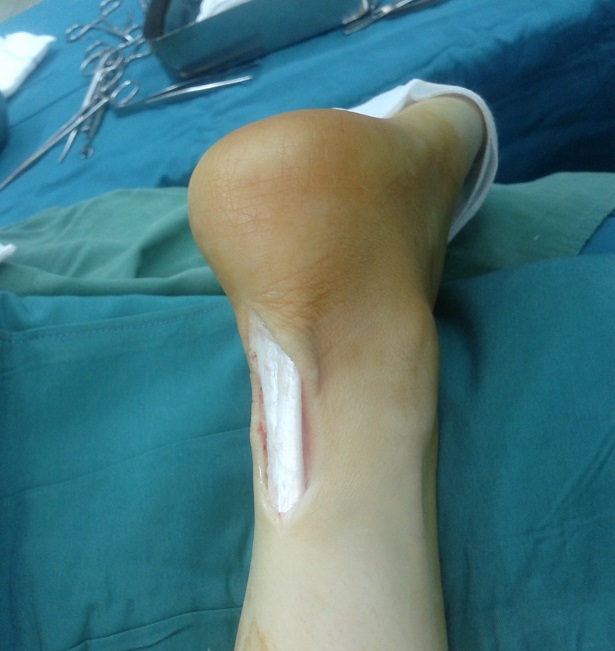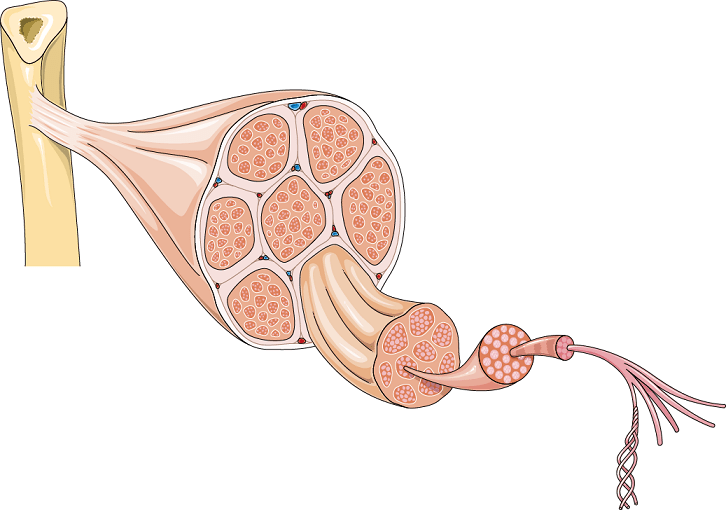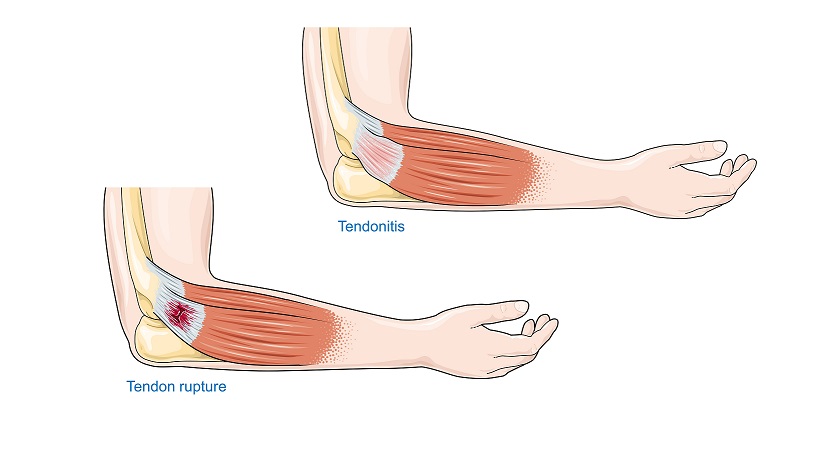The average time to heal from tendinitis in an ideal situation is 3-6 months. This only applies though if you act as soon as you assume you have tendinitis. The longer you wait, the longer your recovery might take. Since tendinitis is a result of overload, the key to efficient recovery is managing your training load. Besides that, your actual fitness levels, training intensity, pain levels, injury history, and motivation to rehab all influence how fast you’re back climbing at your level.
To recover fast from tendinitis, you need to understand what it is, how it develops, and which healing stages tendon healing goes through. While also understanding the nuances of tendinitis, its symptoms, and the progressive loading that comes with its rehab.
So, of course, that’s what we’re going to discuss below.
Ready to fix your tendinitis?
Let’s do it!
1. What is Tendinitis?
Tendinitis is an inflammation (-itis) of the tendon (tendon-). Even though tendinitis is a form of tendinopathy (diseased tendon) it is not the same. As things go, a tendon can be injured without inflammation being present. So, an injured tendon with inflammation is tendinitis, and without inflammation it is tendinopathy.
Tendinitis is a result of overuse and usually develops slowly. This is unlike a tendon rupture which is due to an acute injury. Because of its slow onset, you might not be aware of why you have pain because the reason for it might be weeks ago. This makes it hard to judge whether you are having tendinitis or just muscle, tendon, or joint pain which will pass in a couple of days.
To figure out if it’s tendinitis that’s provoking your pain, consider the following:
- Can you provoke your pain by pressing on a tendon?
- Is there redness, heat, swelling, and/or pain around the tendon?
- Does your pain get worse with activity?
- Did you change your climbing intensity in the last 4 to 6 weeks?
If your answer is yes to all the above, then you might be developing tendinitis.
Before I tell you the fastest way to heal from tendinitis, let’s dive into some tendon anatomy.
1.1 Tendon Anatomy
A tendon can contract a tiny bit but is mostly a passive structure connecting muscles to bones. Tendons are stiffer than muscles and are responsible for transferring force from muscle to bone and vice versa.
A tendon is made up of mainly 3 things:
- Collagen; providing stiffness and strength
- Elastin; providing elasticity
- Water
When a tendon is healthy it’s white, fibrous, and elastic. A Tendon’s capacity to consume oxygen is 7.5 times lower than that of a muscle.1 This relatively low metabolic rate makes it prone to overuse injuries since the response to the load comes after the load itself (that’s why you should consider your training over various weeks to make sense of your tendon pain).
So, what does a tendon look like in reality?
Be prepared, if you have a weak stomach. Here’s a photo of an Achilles tendon laid bare during surgery.

Below is a drawing of the build-up of a tendon. You see how each fiber is grouped in bundles, with bundles being part of larger ones. Until you have an entire tendon.

1.2 Symptoms
Since tendinitis involves inflammation, all the symptoms that come with inflammation are present at the site of tendinitis. These are:
- Redness
- Swelling
- Loss of function (less mobility or a reduction of strength for example.)
- Heat
- Pain
You can feel pain at the site of the tendon itself and/or across the muscle it connects to. Furthermore, your pain might increase when loading the tendon above its limit. Depending on the severity of your tendinitis this might happen just by lifting something light, or after a couple of boulder problems. Usually, the pain will reside once you rest the injured tendon.
2. Why Do You Have Tendinitis?
You develop tendinitis due to overuse. As a climber, this means that you climbed so much that your tendon couldn’t adapt fast enough. Beware though, that it is not only climbing that influences, for example, your elbow tendons. If you have a desk job or work in construction your elbow tendons work hard while typing, clicking the mouse, or lifting heavy stuff at a construction site.
Thus, consider all the load that’s being placed on your painful tendon. This includes work, climbing, other sports, and doing odd jobs at home you do at home like gardening or renovations.
Once you have taken stock of the workload your tendon has endured over the previous 4-6 weeks, how does it look?
- Were there any changes?
- Has your recovery time gone down; did you sleep less? Experienced more stress? Started new activities?
- Did you have an acute injury; it might have led to a relative overload because you were compensating for a weakness?
If nothing happened during the last 4-6 weeks, you might have been overloading slower or your body took longer to adapt. Thus, extend the time to analyze and ask the same questions again until you get an answer that makes sense.
On a closer look, your tendon responds to an increased physical load (climbing) by getting stronger. When you overload your tendon damage occurs. This will heal if you give it enough time, if you don’t, your tendon degenerates. The cells of your tendon which are thought to be responsible for keeping a balance between building your tendons up and breaking them down are called “tenocytes”.2
3. What are the Healing Phases of Tendinitis?
Typical tendon healing goes through 3 healing phases: the acute phase (inflammatory), the sub-acute (remodeling), and the chronic phase (modeling).1 In each of these phases a different aspect of tendon healing is emphasized.
Remember though, that most research into the healing of tendons has been done in animals and ruptured human tendons. The healing process of tendinitis isn’t that well understood. Still, I’ll discuss the healing phases anyway because I believe they give an idea of what happens in your tendon when it heals. It’s important to remember though that with tendinitis the healing phases can be mixed and can take a lot longer than described. The healing times for the different phases are the ones seen for a ruptured tendon or the perfect healing progression after tendinitis.
3.1 Acute or Inflammatory Phase (0-5 Days after Injury)
During the acute phase, there’s an inflammation in your injured tendon which increases the blood flow. With this increase in blood supply, you might experience redness, swelling, and heat at the injured site. Since the blood carries many chemicals that make your nerves more sensitive, you could experience pain at rest.
This amazing mechanism is the start of your healing process and shouldn’t be interfered with. I believe you should only take anti-inflammatory medication when your inflammatory process doesn’t resolve itself.
Otherwise, just let your body do its thing. During the inflammation phase, your body is setting everything up for repair. Damaged cells or are cleaned out and repair materials are brought on-site to start rebuilding your tendon.
3.2 Sub-Acute or Remodelling Phase (5 days-6 weeks)
After the initial inflammation phase, your tendon starts rebuilding to its original form. The construction of collagen (building blocks of tendons) peaks during this phase.
Since the inflammatory response is on the decline at this time, you’ll experience less pain. Your tendon is healing so you might only experience pain above a certain intensity level or with specific movements.
3.3 Chronic or Modelling Phase (After 6 weeks)
After 6 weeks of intense collagen production, the building intensity decreases. Now, the collagen fibers will align in the direction of stress (very important to know if you want to heal fast, more on this in the next chapter). And, the collagen becomes stiffer and stiffer, eventually changing into scar tissue. The conclusion of the remodeling phase can take up to a year.
4. What is the Fastest Way to Heal Tendinitis?
The fastest way to heal from tendinitis is to figure out in what healing phase your tendon is. So, is it either the acute, sub-acute, or chronic phase? With this information, you can decide on the appropriate exercises and exercise intensity to load your tendon progressively.
I’ll now show you how to load your tendon the best way in each healing phase for best results.
Before I do t, I would like to mention again, don’t wait for your tendonitis to heal by itself. As soon as you assume you have tendinitis, ask yourself the questions I discussed in chapter two and/or consult a health care professional.
Do you have tendinitis? Then act with the guidelines I discuss below.
4.1 Acute Phase
If there is active inflammation in your tendon try to not do anything that provokes pain. As you know by now, your body is setting everything up for repair.
Rest your arm, fingers, shoulder, or wherever you feel pain. You could add compression to increase blood circulation and reduce swelling. This would also be a moment to ice if you want to.
As soon, as you notice the inflammation gets less (normally after 5-7 days) you can move on to the recommendations in the next phase. If you still notice inflammation wait for up to 2 weeks to see if it subsides.
If it doesn’t, you continue to the next phase anyway.
Why?
Because as I mentioned before, the healing of tendinitis isn’t that clear cut. Remember how you get tendinitis? Due to overload. So, the essential thing to do while healing your tendinitis is to manage your training load. And if you’ve been ignoring your tendinitis for a long time, you can experience inflammatory symptoms long into your rehab.
4.2 Sub-acute Phase
You’ve given your tendon the rest it needed and regardless if your inflammatory symptoms subsided entirely or not, it’s time to move on.
It’s time to start reloading your tendon. But this time, in a way that promotes recovery and growth.
Which means that it’s time to move. As things go, in the next phase your collagen fibers will remodel in the direction of stress.
But how does your body know the direction of stress?
Because you show it by moving, stretching, and strength exercises.
The safest way to load a tendon in my opinion is in the following way:
- Isometrics: these are strength exercises where you generate force without movement (like hangboarding and planks).
- Eccentrics: focus on the muscle lengthening part of a movement (with a pull-up this would mean someone press you up and you lower by yourself).
- Concentrics: generating force in both directions of a strength exercise, but still with an emphasis on the lengthening part of it (like you do pull-ups, push-ups, and any other regular strength exercise).
All the while stretching your tendon. Starting with light stretches and progressing to more intensive stretching as your tolerance increases.
Are you feeling pain while doing exercises? I always tell my patients to allow a pain intensity of 4-5/10 but it shouldn’t feel like a sting of a knife nor have a radiating character (feeling the pain in another place than the tendon itself).
4.3 Chronic Phase
In the chronic phase, your tendon is going to remodel into the tendon you want it to be. So, as a rock climber or boulderer now is the time to think about returning to the wall (if you didn’t already). In the meantime, keep doing your strength training. In the beginning, I suggest you do your strength training and climbing on different days. But then, as soon as you’ve found that you can handle climbing, do them on the same day. Then your tendon has more time to recover in between training days.
Start with open holds, start slow, start easy and climb short. Way below your usual level. Then see what happens the day after. If everything is fine, do the same training. And see again what happens the day after.
You’re allowed to feel that you did something, but you want your symptoms to subside within 24 hours. If that’s the case you can progressively increase your climbing intensity by 10-20%.
Yes, you understood that right. This means you’re going to take baby steps. But remember, after every step, a 10-20% increase in training intensity will become larger and larger.
5. Take-Home Messages
Tendinitis is a complicated injury. Unlike acute trauma’s the healing of tendinitis isn’t set into stone. You might progress through each healing phase normally or experience inflammatory responses months into your rehab process.
Besides that, here are some other factors that influence the healing of your tendon:
- Your Fitness levels
- Time since the symptoms started
- Available time for rehab
- Your Stress levels
- Other activities you do besides climbing (job, hobbies, situation at home)
And finally, every person feels pain in their own way and responds to load differently. Since both are an integral part of tendinitis and the healing of it, your rehab will always be according to your personal condition.
6. Sources & Citations
- Sharma P, Maffulli N. Biology of tendon injury: Healing, modeling and remodeling. J Musculoskelet Neuronal Interact. 2006;6(2):181-190.
- Sharma P, Maffulli N. Tendon Injury and Tendinopathy. J Bone Jt Surg. 2005;87(1):187-202. doi:10.2106/jbjs.d.01850
- A & B: Image by Smart Servier, licensed under: https://creativecommons.org/licenses/by/3.0/ – changes were made

